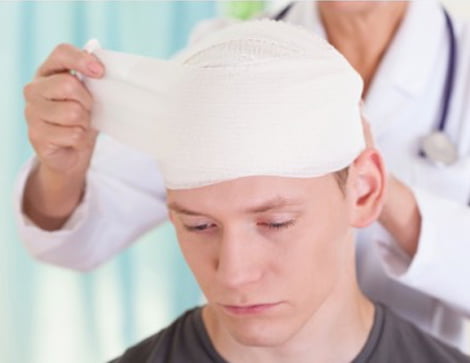Electroencephalogram Biofeedback for Reading Disability and Traumatic Brain Injury by Thornton KE Ph.D. and Carmody DP Ph.D.
Reading disabilities present major challenges to the educational system. The estimated prevalence rate for learning disabilities is 15% of the student population [1], with 6.5 million children requiring special education in 2002 [2]. Approximately 63% of these special education children have specific learning disabilities or speech and language problems without a concomitant physical disability. Between 28% and 43% of inmates in adult correctional facilities require special education (versus 5% in normal population), and 82% of prison inmates in the United States are school dropouts [3].READ FULL TEXT (PDF)
EEG Operant Conditioning (biofeedback) and Traumatic Brain Injury by Thatcher RW
A review is presented of the currently sparse literature about EEG operant conditioning or biofeedback as a treatment to reduce symptomology and patient complaints following a traumatic brain injury.READ FULL TEXT
Articles
The Elusive Nature of Mild Traumatic Brain Injury (pdf) by Swatzyna RJ, PhD
The author discloses a personal history of undiagnosed mild traumatic brain injury (MBTI) and identifies a typical course and progression of this condition. He advocates a careful inquiry for possible head injury whenever the clinical history shows an original period of normal functioning, a progression of disturbance over time, multiple diagnoses, and poor response to treatment with medicationREAD FULL TEXT (PDF)
Thoughts About the Study of Cognitive-linked Brain Dysfunction Physiology After Mild Closed-head Trauma by Gross HS M.S. M.D.
Some people, after a mild closed-head trauma of either direct-impact or non-impact acceleration/ deceleration type, do not return to pre-trauma cognitive and emotional behavior. While their brain functioning appears relatively intact under some circumstances, it performs poorly under others.READ FULL TEXT (PDF)
Research Papers
Impact of qEEG-Guided Coherence Training for Patients with a Mild Closed Head Injury (abs.) by Jonathan E. Walker MD, Neuroscience Centers, Inc., Dallas, TX, ( neurotherapy@hotmail.com), Charles A. Norman, University of Alberta, Edmonton, Alberta, Canada Ronald K. Weber, Neuroscience Centers, Inc.
Recovery from mild closed head injury (of >50%) was noted in 88% of the patients (mean recovery = 72.7%). All patients reported that they were able to return to work following the treatment, if they had been employed prior to the injury. On average, 19 sessions were required, less than the average of 38 sessions required using power training of Cz-Beta in our previous unpublished study. Conclusions. In this uncontrolled open trial of QEEG-guided coherence training, the majority of patients with mild closed head injury experienced substantial and rapid symptomatic improvement, including return to work. Further study with controls and additional outcomes measures is warranted.READ FULL TEXT
Neurofeedback Therapy for a Mild Head Injury by Byers AP
The purpose of this study was to evaluate Neurofeedback Therapy (NFT) for a Mild Head Injury (MHI). The subject was a 58-year-old female who fell and struck her head in 1988. The NFT began in 1994 and was preceded and followed by neuropsychiatric and neuropsychological evaluations as well as quantified electroencephalograms (QEEG). The patient completed a symptom checklist and the Minnesota Multiphasic Personality Inventory 2 (MAPI- 2) before and after NFT.READ FULL TEXT (PDF)
Diagnosis and Treatment of Head Injury by Hoffman DA M.D., Stockdale S Ph.D., Hicks LL B.A., Schwaninger JE B.A.
Brain injury appears to affect from 132 to 367 people per 100,000. Traditional methods for diagnosing mild head injury, such as medical history, CAT scan and MRI, often show normal test results even though patients complain of significant neurocognitive dysfunctions. Robert Thatcher compiled a normative reference EEG database in 1979. The norms were replicated in several studies.READ FULL TEXT (PDF)
Changes After EEG Biofeedback and Cognitive Retraining in Adults with Mild Traumatic Brain Injury and Attention Deficit Hyperactivity Disorder (abs. pg. 4) by Tinius TP Ph.D. and Tinius KA M.S.W.
Adults diagnosed with mild traumatic brain injury (mTBI) or Attention Deficit Hyperactivity Disorder (ADHD) were treated with EEG Biofeedback and cognitive retraining.READ FULL TEXT (PDF)
EEG NeuroBioFeedback Treatment of Patients with Brain Injury: Part 3: Cardiac Parameters and Finger Temperature Changes Associated with Rehabilitation (abs. pg. 1) by Laibow RE MD, Stubblebine AN MSc, Sandground MB DSc
Twenty-seven patients with brain injury were treated by computer-assisted electroencephalographic NeuroBioFeedback (EEG-NBF). All patients were medication-free during treatment.READ FULL TEXT (PDF)
EEG NeuroBioFeedback Treatment of Patients with Brain Injury Part 4: Duration of Treatments as a Function of Both the Initial Load of Clinical Symptoms and the Rate of Rehabilitation (abs. pg. 1) by Bounias M DSc, Laibow RE MD, Stubblebine AN MSc, Sandground H, Bonaly A DScr
Twenty-seven patients with brain injury, primarily from car accidents and stroke, were treated by computer-assisted electroencephalographic NeuroBioFeedback (EEG-NBF).READ FULL TEXT (PDF)
Improvement/Rehabilitation of Memory Functioning with Neurotherapy/QEEG biofeedback by Thornton K
This article presents a new approach to the remediation of memory deficits by studying the electrophysiological functioning involved in memory and applying biofeedback techniques. A Quantitative EEG (QEEG) activation database was obtained with 59 right-handed subjects during two auditory memory tasks (prose passages and word lists). Memory performance was correlated with the QEEG variables.READ FULL TEXT
Flexyx Neurotherapy System in the Treatment of Traumatic Brain Injury: An Initial Evaluation by Schoenberger NE, Shif SC, Esty ML, Ochs L, Matheis RJ
Twelve people aged 21 to 53 who had experienced mild to moderately severe closed head injury at least 12 months previously and who reported substantial cognitive difficulties after injury, which interfered with their functioning. READ FULL TEXT

Comments are closed